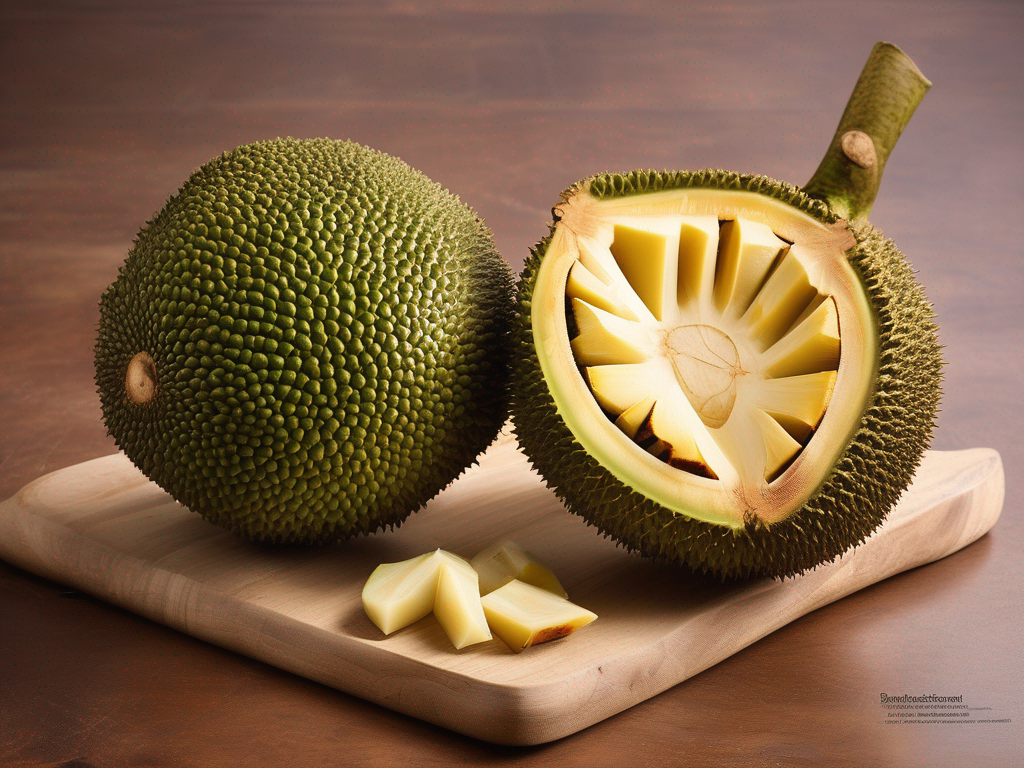
When to Discard Overripe Breadfruit
Get Your Free Food Safety Cheat Sheet
30 most common foods with instant answers. Print it and stick it on your fridge—completely free!
When to Discard Overripe Breadfruit
Breadfruit is a versatile and nutritious tropical fruit that is enjoyed in many parts of the world. It can be used in both sweet and savory dishes, making it a popular choice for cooking. However, like any fruit, breadfruit can become overripe if not stored properly. In this blog post, we will discuss when to discard overripe breadfruit to ensure food safety and prevent food waste. (Breadfruit)
Understanding Breadfruit
Before we delve into the topic of discarding overripe breadfruit, let's first understand what breadfruit is. Breadfruit is a large green fruit that grows on trees native to the Pacific Islands. It has a starchy texture and a mild flavor, making it a great substitute for potatoes or other starchy vegetables in cooking.
Breadfruit is rich in carbohydrates, fiber, and vitamins, making it a healthy addition to your diet. It can be roasted, fried, boiled, or baked, depending on your culinary preferences. However, like any fruit, breadfruit has a limited shelf life and can spoil if not stored properly.
Signs of Overripe Breadfruit
When breadfruit becomes overripe, it can develop certain signs that indicate it is no longer safe to consume. Here are some common signs of overripe breadfruit:
1. Mold Growth
- Mold growth on the skin of the breadfruit is a clear indication that it is overripe.
- Mold can be green, white, or black in color and should not be ignored.
2. Soft Texture
- Overripe breadfruit tends to become overly soft and mushy to the touch.
- The flesh may lose its firmness and start to break down.
3. Unpleasant Odor
- A strong, sour, or fermented odor emanating from the breadfruit is a sign of spoilage.
- If the smell is off-putting, it is best to discard the fruit.
4. Discoloration
- Overripe breadfruit may develop dark spots, bruises, or discoloration on the skin.
- The flesh inside may also change color and look unappetizing.
Food Safety Tips for Handling Breadfruit
To ensure the safety and quality of your breadfruit, follow these food safety tips when handling and storing it:
1. Store in a Cool, Dry Place
- Breadfruit should be stored in a cool, dry place away from direct sunlight.
- Avoid storing breadfruit in the refrigerator, as it can cause the fruit to spoil faster.
2. Check for Ripeness
- When purchasing breadfruit, choose fruits that are firm and free of blemishes.
- Check for any signs of mold or soft spots before buying.
3. Use Proper Storage Containers
- Store breadfruit in a breathable container or paper bag to allow air circulation.
- Avoid storing breadfruit in plastic bags, as they can trap moisture and promote mold growth.
4. Use It in Time
- Breadfruit should be consumed within a few days of ripening to ensure optimal freshness.
- Plan your meals accordingly to avoid waste and spoilage.
When to Discard Overripe Breadfruit
Now that you know the signs of overripe breadfruit and how to handle it safely, let's discuss when it is time to discard the fruit:
- Visible Mold: If you notice any mold growth on the breadfruit, it is best to discard the fruit immediately.
- Unpleasant Odor: A strong, foul smell coming from the breadfruit indicates spoilage and should not be ignored.
- Extreme Softness: If the breadfruit feels excessively soft or mushy to the touch, it is likely overripe and should be discarded.
- Discoloration: Dark spots, bruises, or discoloration on the skin or flesh of the breadfruit are signs of spoilage.
Conclusion
In conclusion, knowing when to discard overripe breadfruit is essential for maintaining food safety and preventing food waste. By being aware of the signs of spoilage and following proper storage practices, you can enjoy fresh and delicious breadfruit in your meals. Remember to check for mold, softness, odor, and discoloration before consuming breadfruit, and discard any fruit that shows signs of overripeness. Enjoy the nutritional benefits of breadfruit by handling it with care and attention to food safety guidelines. (Breadfruit)
Related Posts
Here are some other articles you might find helpful:
Authoritative Food Safety References
These agencies and university labs inform every tip and health precaution we publish.
USDA FoodKeeper – Cold Storage Guidelines
Official refrigerator, freezer, and pantry timelines maintained by the U.S. Department of Agriculture.
Visit USDA FoodKeeperFDA Produce Safety Rule & Grower Guidance
Field-to-fridge handling practices that prevent contamination of fruits, vegetables, and leafy greens.
Visit FDA Produce SafetyCDC Foodborne Illness Prevention Hub
Surveillance-backed guidance on pathogens, symptoms, and steps to reduce foodborne illness risk.
Visit CDC Food SafetyUC Davis Postharvest Technology Center
University research detailing optimal storage atmospheres for produce after harvest.
Visit UC Davis PostharvestPenn State Extension – Home Food Preservation & Safety
Peer-reviewed extension bulletins on safe canning, chilling, and reheating practices.
Visit Penn State ExtensionGet Your Free Food Safety Cheat Sheet
30 most common foods with instant answers. Print it and stick it on your fridge—completely free! Want more? Upgrade to the complete guide with 70+ foods.
Scan your food directly and get instant safety info using our AI-powered camera feature.